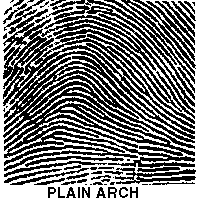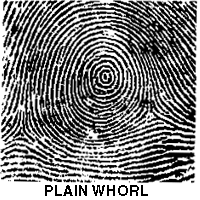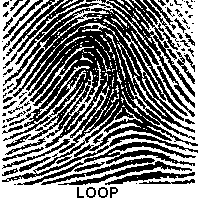


Fingerprinting Background
Almost every time you touch something, you leave a fingerprint. Our hands are covered with sweat pores. Sweat is often mixed with other body oils and dirt and when you touch something with your fingers, the oils and dirt on your skin stick to the surface of the object leaving an imprint of your fingertips. Prints that you can see with the naked eye are called visible prints. Invisible prints are called latent prints. Most fingerprints are latent prints. A third type of print is a plastic print. It is a print that leaves an impression on objects such as soap or clay. A forensic scientist is interested in fingerprints as a means of identification to help solve crimes.
Fingerprints have been used as a means of identification for centuries. In ancient Babylon, fingerprints were used on clay tablets for business transactions and in ancient China, thumb prints have been found on clay seals.
Fingerprints were first used in the United States by the New York Prison system in 1903. The first criminal conviction based on fingerprint evidence was the case of Thomas Jennings who was charged with the murder of Charles Hiller, while committing a burglary in 1911.
Fingerprints offer an infallible means of personal identification. The outer layer of skin on our fingers is made up of a series of ridges. The ridges on each person's fingers are unique. Other personal characteristics change - fingerprints do not.
The F.B.I. has a collection of fingerprints that numbers in the millions. Investigators often compare fingerprints from a crime scene to the fingerprints in the F.B.I. fingerprint bank to see if they can find a match and thus know who committed the crime. They often fingerprint suspects to see if their fingerprints match those found at the crime scene.
There are three basic types of fingerprints - the arch, the whorl and the loop.



Arch patterns have lines that start at one side of the print and then rise toward the center of the print and leave on the other side of the print.
Whorl patterns have a lot of circles that do not leave either side of the print.
Loop patterns have lines that start on one side of the print and then rise toward the center of the print and leave on the same side of the print they start on.